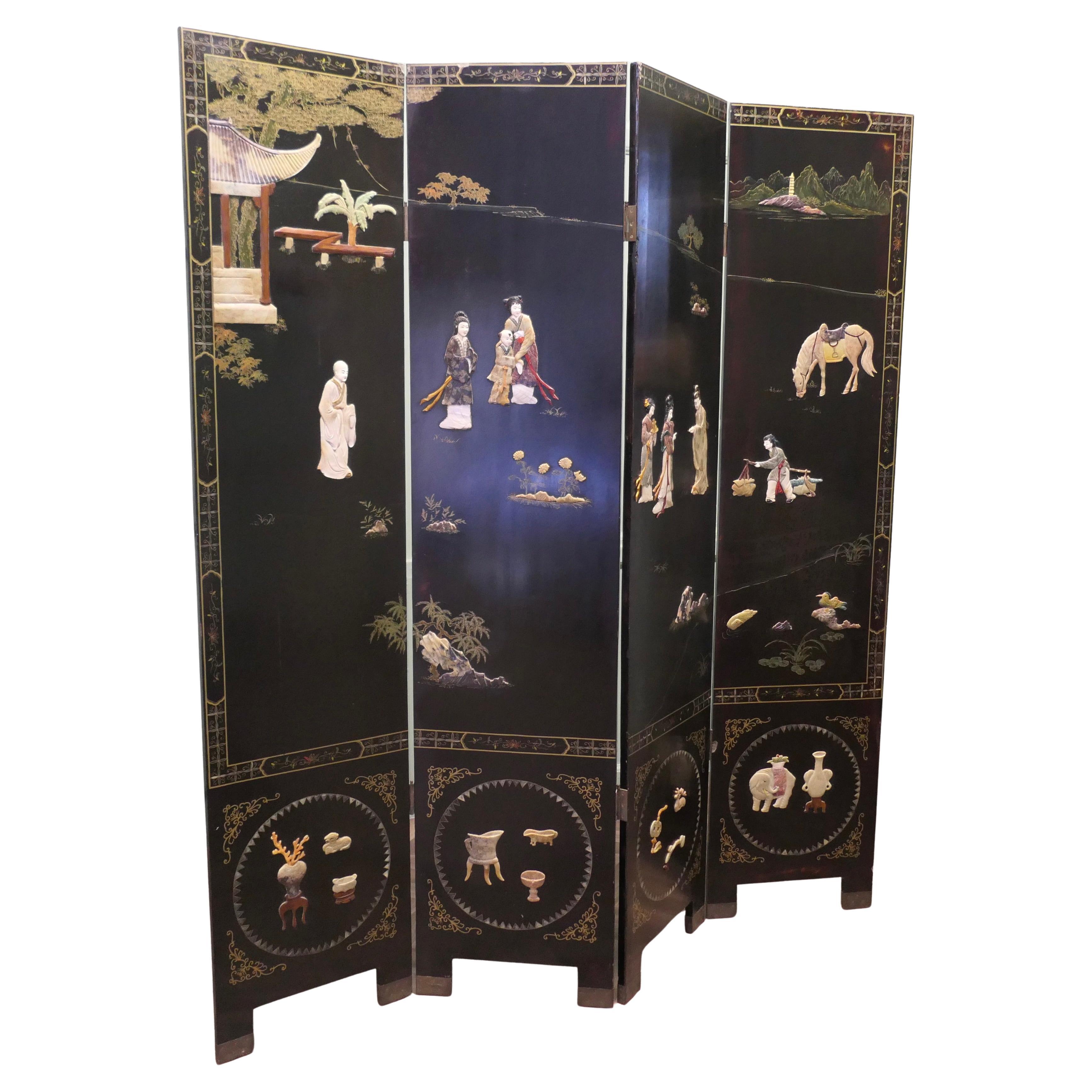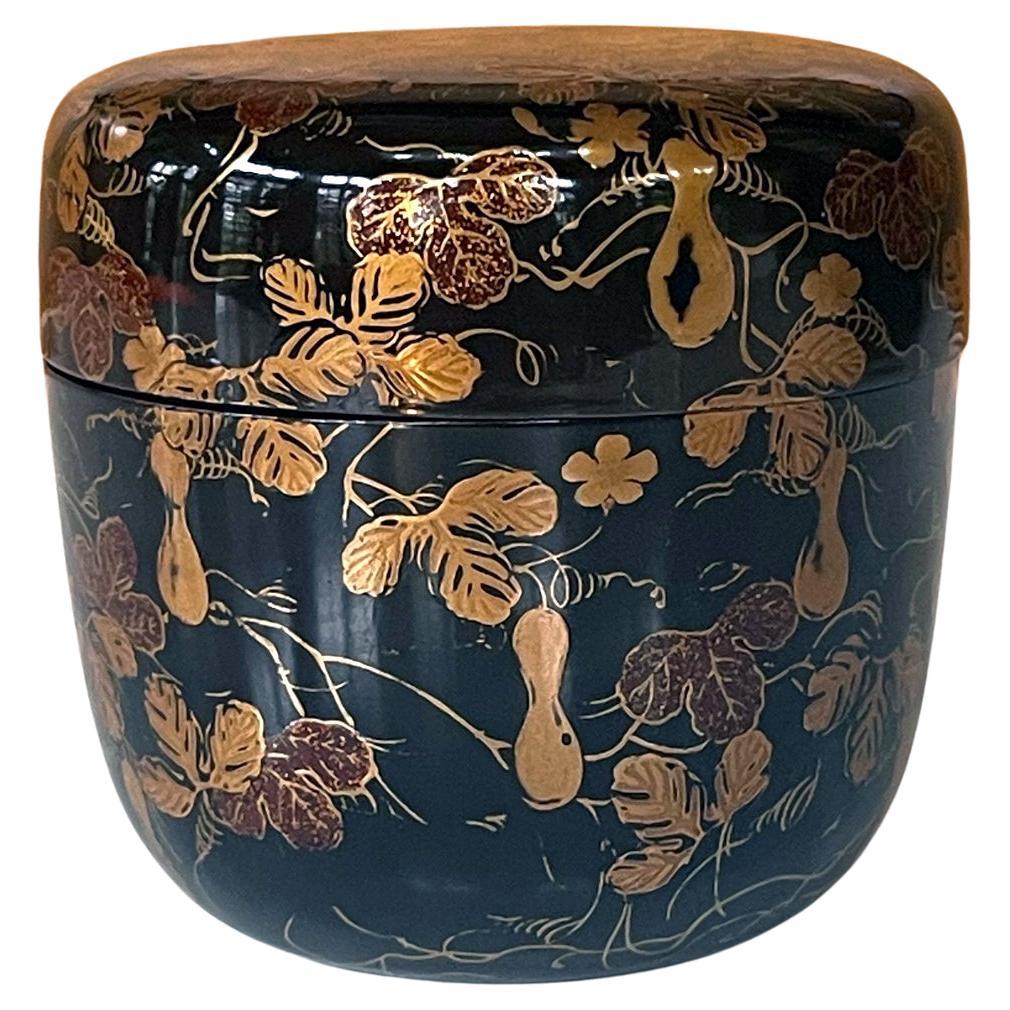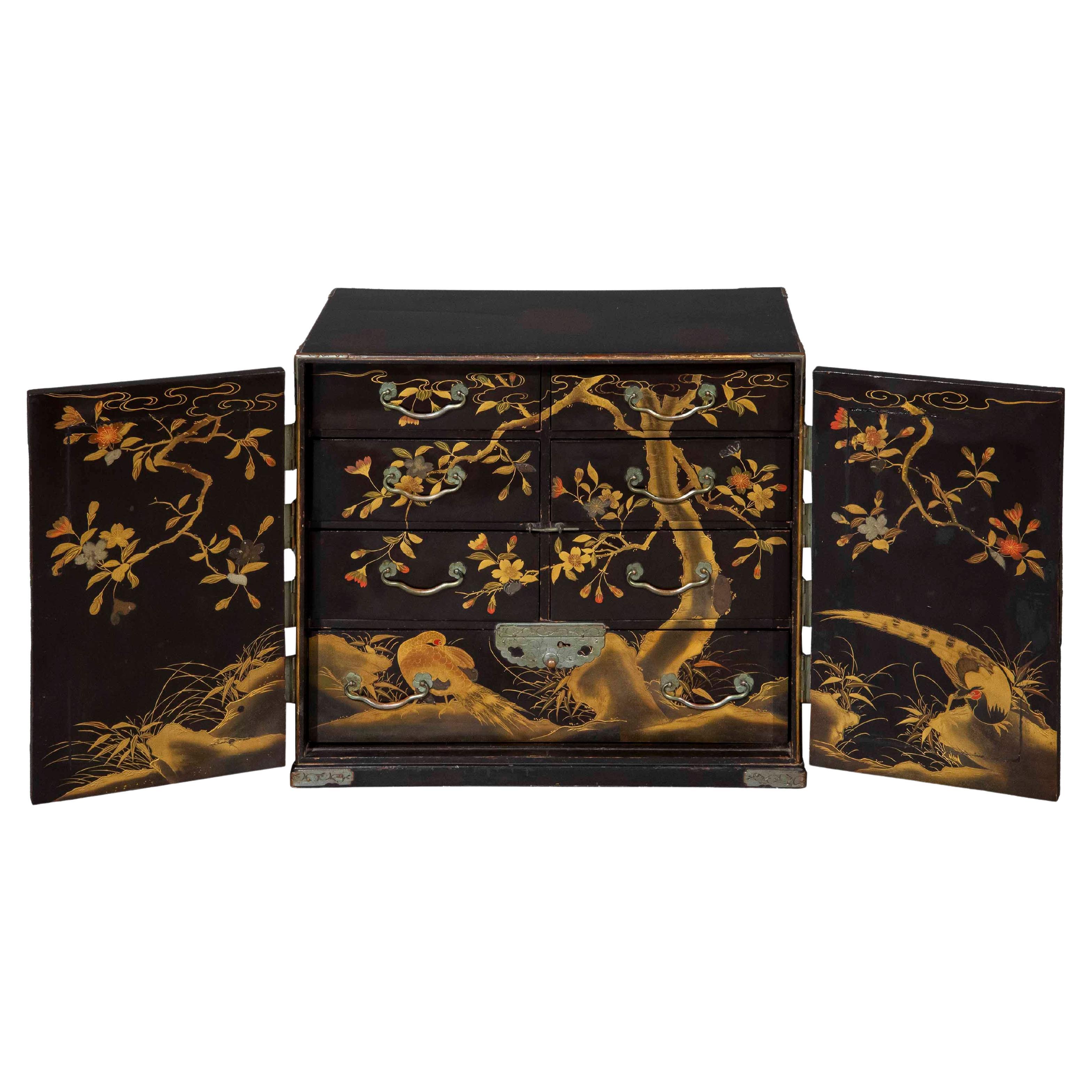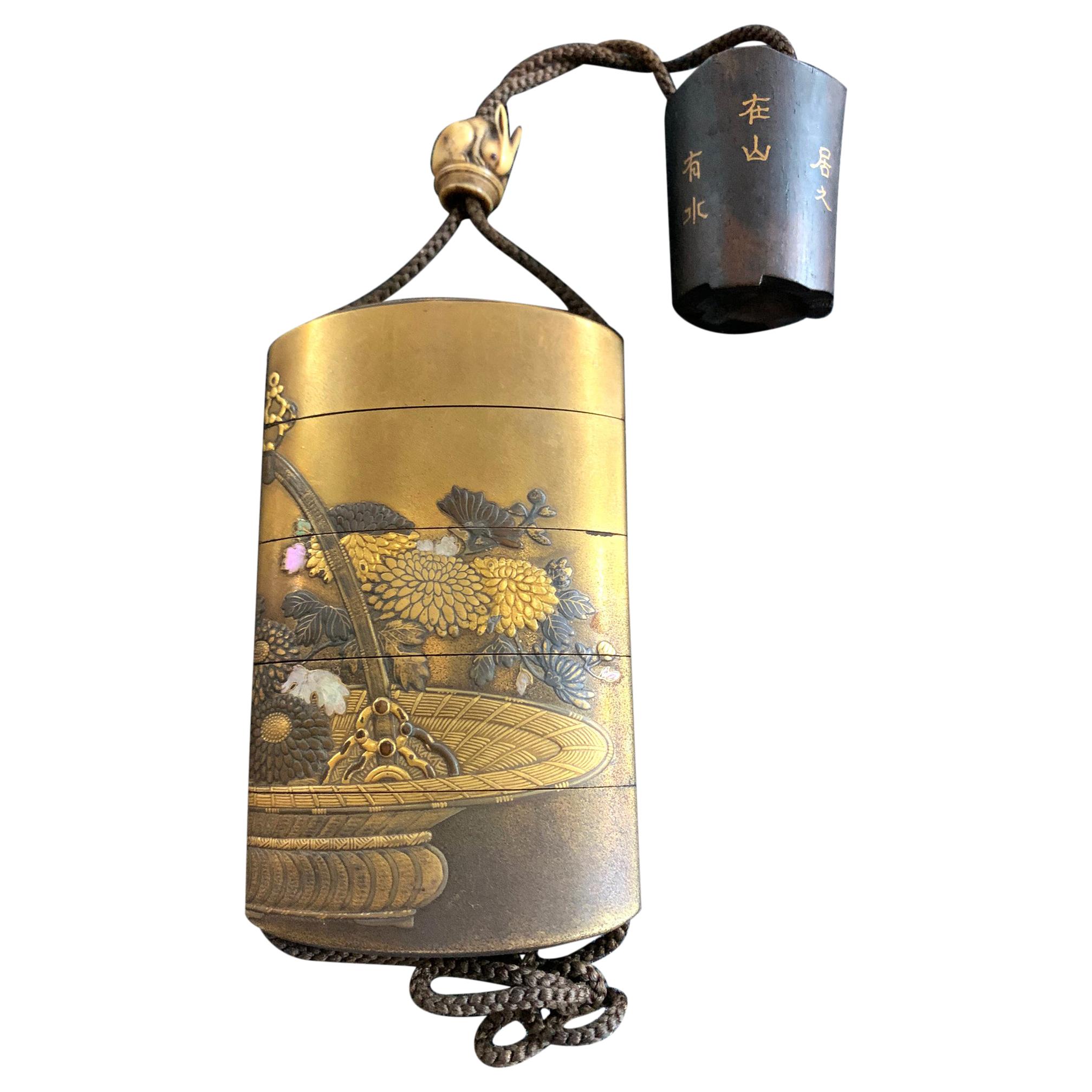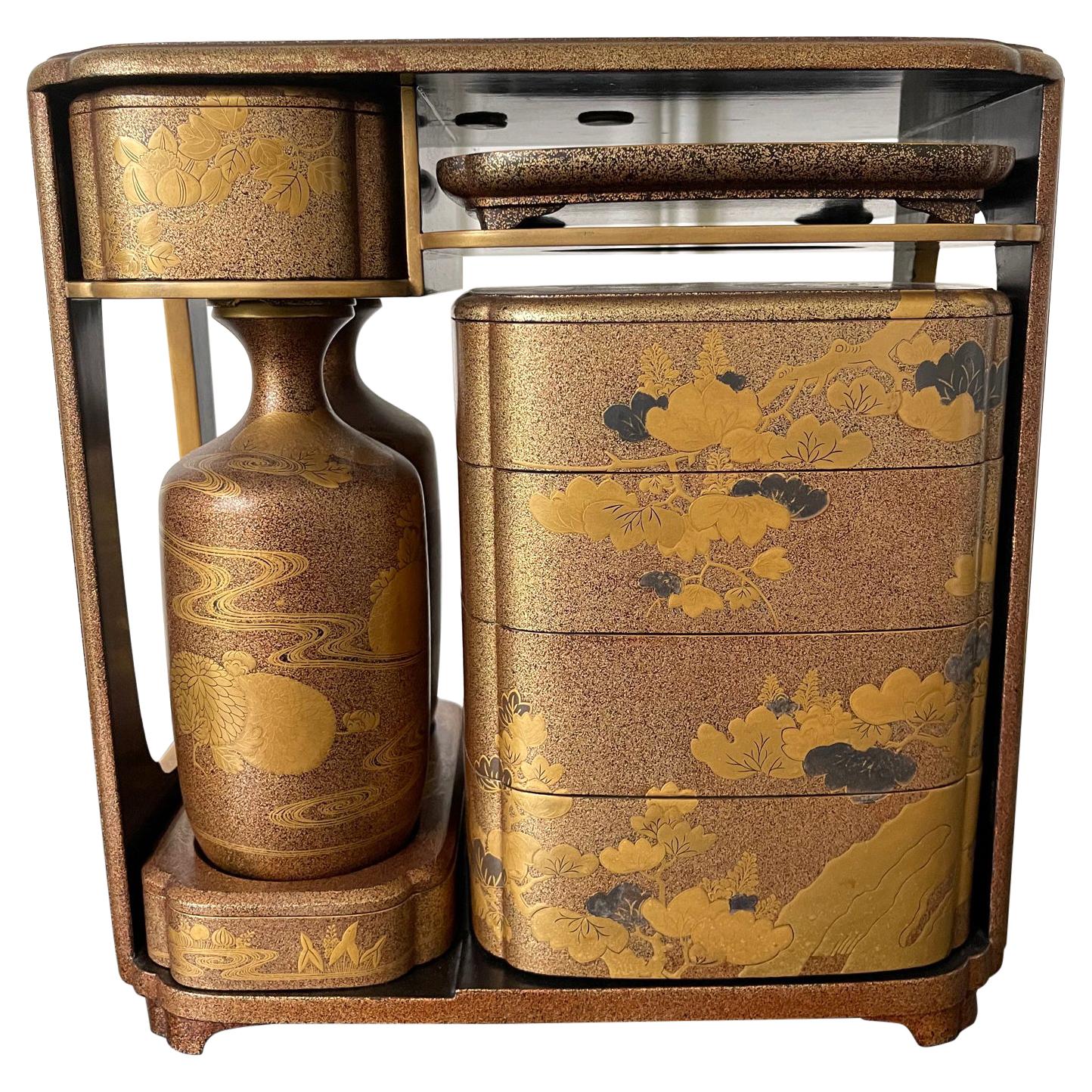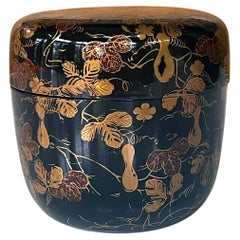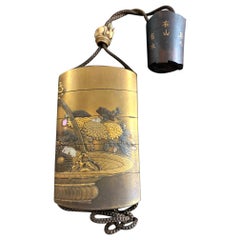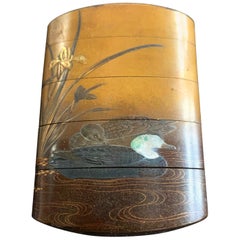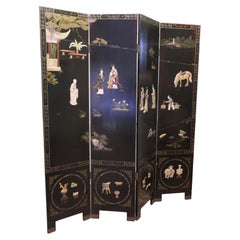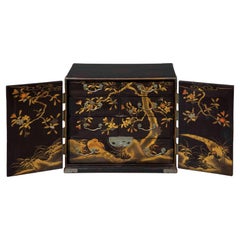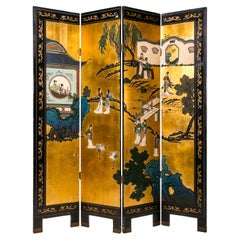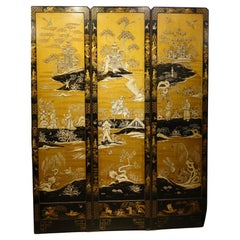Items Similar to Japanese Maki-e Lacquer Portable Sagejubako Theme of Three Winter Friends
Want more images or videos?
Request additional images or videos from the seller
1 of 21
Japanese Maki-e Lacquer Portable Sagejubako Theme of Three Winter Friends
$8,500
£6,454.25
€7,380.92
CA$11,875.73
A$13,208.41
CHF 6,897.02
MX$160,732.26
NOK 88,085.47
SEK 82,608.63
DKK 55,086.62
Shipping
Retrieving quote...The 1stDibs Promise:
Authenticity Guarantee,
Money-Back Guarantee,
24-Hour Cancellation
About the Item
Sagejubako is a portable lunch or picnic set that became popular in the early Edo period when an additional meal was added between breakfast and dinner. It normally consists of a handled carry case and sake bottles, serving trays and tiered food storage boxes called "jubako". This set is rare not only because it appears to retain all the parts (it includes a carry case, seven trays, two sake bottles with lower compartment, a four-tiers jubako), but also because it is lavishly decorated in the motif of "Three Winter Friends: Pine, Bamboo and Plum blossom", one of the designs preferred by the scholarly type. Executed in gold hiramaki-e, takamaki-e and kirigane on black background, the three motifs were used in various combinations across the entire surfaces to decorate the trays, sake bottles, jubako and also exterior top of the carry case. The carry case itself is wonderfully constructed with an all-around lattice wall of overlapping coin design, a symbol for good fortune. All interior of the containers was finished in a vermilion red. The set was finely crafted with bold composition and painstaking workmanship.
The set is likely dated to the second half of 19th century (early Meiji period). There are a minor loss and some stable aged cracks in addition to expected patina, nevertheless it remains a beautiful and well-preserved example.
- Dimensions:Height: 14.5 in (36.83 cm)Width: 14 in (35.56 cm)Depth: 8 in (20.32 cm)
- Style:Japonisme (Of the Period)
- Materials and Techniques:
- Place of Origin:
- Period:
- Date of Manufacture:Second Half of the 19th Century
- Condition:Wear consistent with age and use. Minor losses. Expected patina on parts of the surface. A few stable aged cracks to the front door of, one small loss to the coin lattice as shown. One lower container under the sake bottle has a crack on the back wall that was touched up at some point.
- Seller Location:Atlanta, GA
- Reference Number:1stDibs: LU945029170472
About the Seller
4.9
Platinum Seller
Premium sellers with a 4.7+ rating and 24-hour response times
Established in 2006
1stDibs seller since 2010
564 sales on 1stDibs
Typical response time: <1 hour
- ShippingRetrieving quote...Shipping from: Atlanta, GA
- Return Policy
Authenticity Guarantee
In the unlikely event there’s an issue with an item’s authenticity, contact us within 1 year for a full refund. DetailsMoney-Back Guarantee
If your item is not as described, is damaged in transit, or does not arrive, contact us within 7 days for a full refund. Details24-Hour Cancellation
You have a 24-hour grace period in which to reconsider your purchase, with no questions asked.Vetted Professional Sellers
Our world-class sellers must adhere to strict standards for service and quality, maintaining the integrity of our listings.Price-Match Guarantee
If you find that a seller listed the same item for a lower price elsewhere, we’ll match it.Trusted Global Delivery
Our best-in-class carrier network provides specialized shipping options worldwide, including custom delivery.More From This Seller
View AllJapanese Lacquered Maki-E Natsume in Kodaiji Style
Located in Atlanta, GA
A Japanese lacquered tea caddy (known as Natsume) with fine Maki-e decoration circa 18-19th century Edo to Meiji period. The large-sized nat...
Category
Antique 19th Century Japanese Meiji Lacquer
Materials
Wood, Lacquer
Antique Japanese Inro by Shigehide Edo Period
Located in Atlanta, GA
This exquisite four-case lacquered inro was dated to the latter part of 18th century to early 19th century (Edo period) and made by Shigehide. The opposite sides of the inro together features a lavish flower arrangement in a bamboo basket (ikebana). The detailed craftmanship was a true pleasure to behold. Mostly Takamaki-e (high relief) were used to texturize the delicate petals of the chrysanthemums, on which different shades of gold were used to create contrast. Raden (mother of pearl) shells were also used to highlight some leaves, rendering the piece an interesting balance of color and material. The interior was completed in a mottled gold finish. It was signed Shigehide on the bottom with a Kao. There is a small carved rabbit ojime bead...
Category
Antique Late 18th Century Japanese Japonisme Lacquer
Materials
Wood, Lacquer
Japanese Inro by Koma Koryu Edo Period
Located in Atlanta, GA
A four-case lacquered inro by Koma Koryu circa 19th century late Edo period. The inro features a pair of Chinese mandarin duck resting under a bundle of blooming irises on the pond. ...
Category
Antique 19th Century Japanese Japonisme Lacquer
Materials
Wood, Lacquer
Japanese Maki-e Lacquerware Portable Picnic Set Sagejubako
Located in Atlanta, GA
Sagejubako is a portable picnic set that became popular in the early Edo period when an additional meal was added between breakfast and dinner. It normally consists of a carry case w...
Category
Antique 19th Century Japanese Japonisme Lacquer
Materials
Lacquer
Fine Japanese Lacquered Inro by Yutokusai
Located in Atlanta, GA
A four-case lacquered Japanese inro by Yutokusai (Gyokkei), a lacquer artist active from 1845-1900 (end of Edo to Meiji period). The slightly round inro features a very intricate design with three unfolded fans on the front and two on the back: each reveals a vignette landscape scenery, likely real places in Japan. Using a combination of hiramaki-e and slight takamaki-e, the artist deftly created the pictures with fine details, rendering the inro as a miniature artwork...
Category
Antique 19th Century Japanese Japonisme Lacquer
Materials
Wood, Lacquer
Fine Miniature Japanese Kodansu with Lacquer Inlays
Located in Atlanta, GA
A fine Japanese miniature kodansu constructed from Kaki wood (Persimmon) circa 19th century, late Meiji period. With its expressive exotic wood grains and exposed tenon construction,...
Category
Antique Late 19th Century Japanese Meiji Lacquer
Materials
Wood
You May Also Like
Japanese Decorated Lacquer and Painted Folding Screen
Located in Godshill, Isle of Wight
Japanese Decorated Lacquer and Painted Folding Screen
This impressive screen has four superbly decorated panels with a montage of Geisha, Japanese Garden and Animals all made from ...
Category
Vintage 1930s Japonisme Screens and Room Dividers
Materials
Lacquer
19th Century Japanese Lacquer Table Cabinet
Located in Richmond, London
A fine and rare Japanese black lacquer table or jewellery cabinet, exquisitely decorated in intricate detail, dating to the late Meiji per...
Category
Antique Late 19th Century Japanese Meiji Lacquer
Materials
Metal
Japanese Lacquer Painted Screen, 1920
Located in Cesena, FC
Elegant screen painted in Japanese lacquer with scenes of imperial life.
Made with 4 wooden and lacquer doors, also painted on the back.
Period: early 1900s
Measures: L. cm 160 - ...
Category
Vintage 1920s Japanese Screens and Room Dividers
Materials
Wood, Lacquer
Three-panels creen in black lacquer and polychrome gilt, China 20th century
Located in PARIS, FR
Three-panel screen in black lacquer and polychrome gilt China mid 20th century.
Category
Mid-20th Century Chinese Other Lacquer
Materials
Wood
Antique Japanese Yosegi (Marquetry) Shibayama Ko Tansu Meiji Period
Located in Point Richmond, CA
Antique Japanese Yosegi (Marquetry) Shibayama Ko Tansu, Meiji period
The marquetry is composed of keyayaki (zelkova) and kakinoki (persimmon) wood. Two small doors with inlaid Moth...
Category
Antique Late 19th Century Japanese Meiji Furniture
Materials
Wood, Mother-of-Pearl, Lacquer
Portable jû'bako 重箱 (tiered food container)
Located in Amsterdam, NL
A rare, high quality lacquered portable jû'bako (tiered food container/stacked picnic box) fitted with a removable vertical safety bar - housing a nice secret – decorated with a refi...
Category
Antique Late 19th Century Japanese Lacquer
Materials
Brass
More Ways To Browse
Black Gold Lacquer
Black And Red Lacquer
Black Lacquer Storage
Black Lacquer Wall Art
Red Lacquer Box
Japanese Containers
Bamboo Black Lacquered
Black Lacquered Boxes
Asian Coins
Black Japanese Tray
Japanese Gold Lacquer Box
Antique Japanese Tray
Red Lacquer Tray
Red Lacquer Boxes Asian
Gold Lacquer Tray
Japanese Lacquered Tray
Japanese Sake
Maki E
